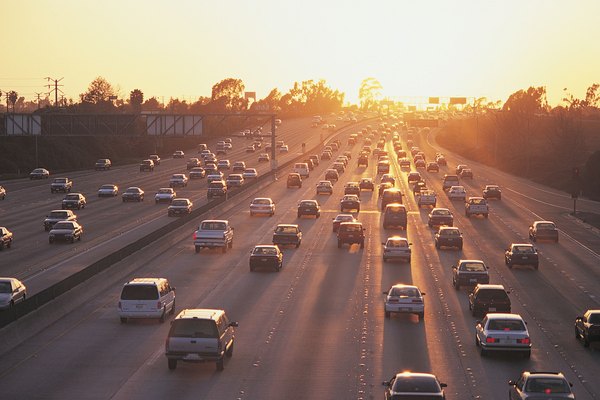What Are the Causes of Traffic Congestion?
by Marlee ElkinsUpdated September 15, 2017
According to the United States Department of Transportation (DOT), there are five billion hours per year of traffic congestion in America. Everyone has experienced traffic congestion, and everyone has been bothered by it. Some of the causes of traffic congestion are recurring, some non-recurring; but most of the causes are preventable.
Recurring Traffic Congestion

According to the DOT, 45% of traffic congestion is caused by recurring traffic issues. DOT reports that the recurring causes of traffic congestion include “insufficient capacity, unrestrained demand, and ineffective management of capacity.” Unrestrained demand and insufficient capacity are interrelated because there are too many vehicles that pile up on the same roads at the same time, but there isn’t enough room on these roads for everyone.
Non-Recurring Traffic Congestion

Some of the non-recurring causes of traffic congestion include incidents like car accidents or disabled vehicles, work zones, bad weather, special events, and emergencies. According to the Department of Transportation, incidents account for 25% of traffic congestion, bad weather accounts for 15%, work zones account for 10%, and special events account for 5%. Not only do detours cause congestion, but work zones, bad weather, and special events often require a significant reduction in the speed limit.
Prevention/Solution

DOT explains that building additional room on mainline roads will lower the severity of insufficient capacity and unrestrained demand. Work zone congestion can be solved by reducing the number of work zones occurring at any one time, and reducing the duration of those work zones. There is no way to prevent bad weather, but implementing a plan to manage the roads and provide alternate routes can help the situation.
Technology's Potential

The DOT is dedicated to improving traffic safety and reliability with the use of available technology. It suggests the use of advanced signals, traveler information and updates in real time, ramp metering, and better management for weather and emergency evacuation management. Rather than waiting until there is an incident, DOT also feels that technology should be used to be more proactive when it comes to traffic congestion.
Effects of Traffic Congestion

Traffic congestion affects everyone at some point, whether it has caused you to be late for work or to get lost due to a road being closed. What many don’t realize is that traffic congestion can also be dangerous. When people are forced to make sudden stops, swerve out of the way of construction zones or potholes, or rush to get somewhere in bad weather, accidents are more likely to occur.
References
Writer Bio
Marlee Elkins has been a writer since 2005. She is a Special Education teacher and is completing her master's degree in education June 2016. She is a certified editor with a bachelor's degree in English from Northeastern University. Elkins' areas of expertise include education, special education, disabilities, medical conditions/treatment and travel.









